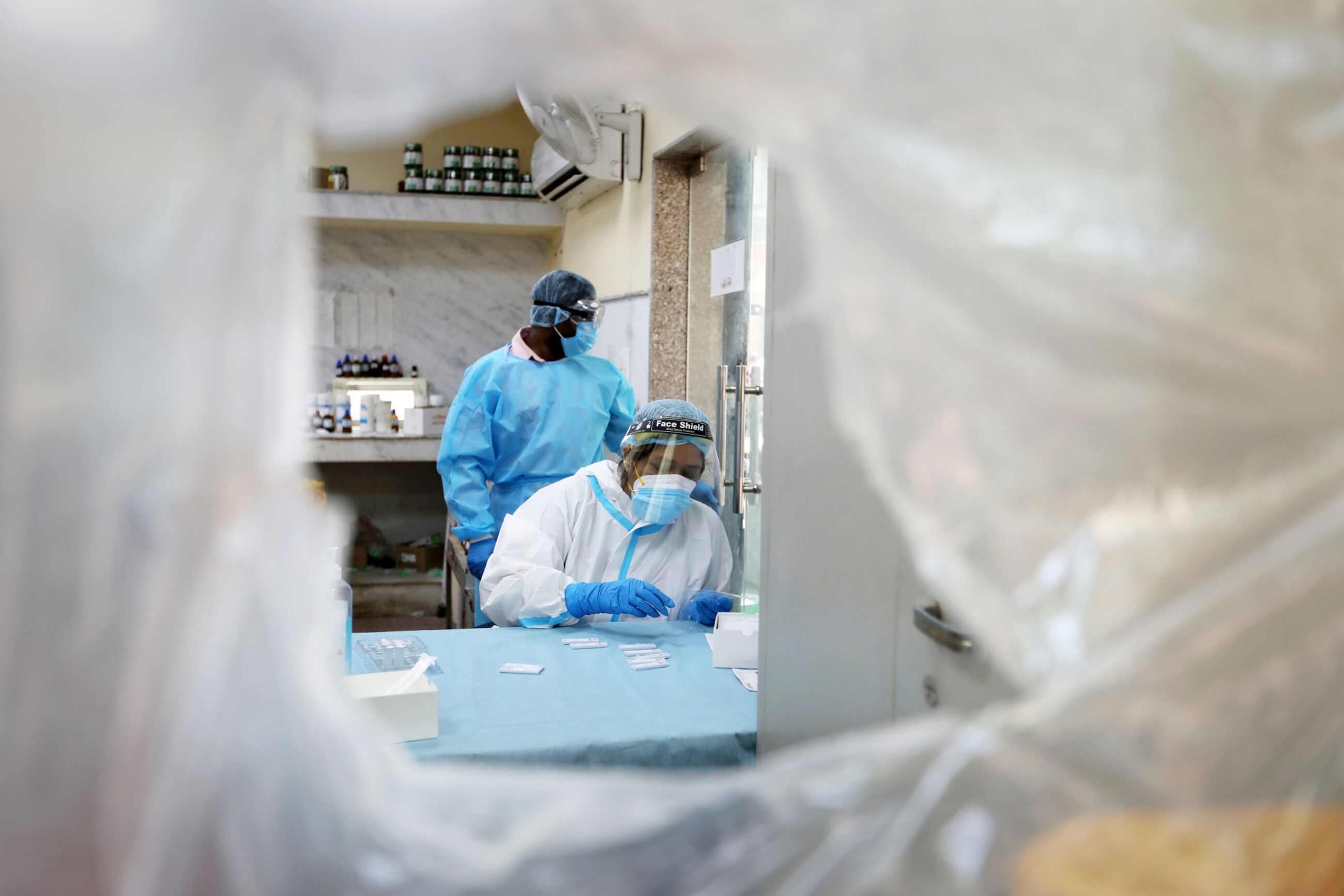As winter sets in, the air hanging over north India thickens with smoke from burning fields, blocking out the sun and making it hard to breathe. This year, that could spell disaster for the country’s battle against the pandemic. With some of the most polluted cities on the planet and more than 8 million confirmed coronavirus cases, India is battling a medical calamity. Temperatures are falling and cases and pollution are spiking across major cities, including the capital New Delhi, one of the worst-affected areas for smog from the rural burning.
Delhi’s 28 million people haven’t had a single day of clean air since early September, according to World Air Quality Index. In the past two weeks, readings for particulate matter of 2.5 microns or smaller, or PM2.5, have risen to more than 400 in some parts of Delhi, eight times the safe level. PM2.5 is closely watched because the particles are small enough to journey deep into the lungs and do the most damage.

With pollution and the virus both attacking lungs, India’s creaking health-care system may come under a double strain of patients competing for the same equipment and resources. An increase in respiratory illnesses due to air pollution will send more people to hospitals with symptoms similar to Covid-19, making identifying and isolating the virus cases difficult, according to Delhi-based pulmonologist Pankaj Sayal.
Low Oxygen
The World Health Organization estimates that dirty air kills 7 million people a year globally, with even short-term exposure causing or aggravating diseases including reduced lung function, asthma and most importantly now, respiratory infections.
“Now if I get Covid, I have less of a margin,” said Meet Malhotra, a 58-year-old Delhi-based advocate who developed asthma as a child. “If your oxygen level goes under 90, you need hospitalization. What happens if you’re already at 92-93 because of air pollution?”

Vehicle and industrial emissions contribute year-round to India’s poor air, combining with dust from road construction millions of domestic fires lit by poor citizens for cooking. But a grim extra wallop comes late in the year as farmers burn hundreds of thousands of acres of crop stubble. While the practice has been banned in the states of Punjab, Uttar Pradesh, Haryana and Rajasthan around the capital, it’s the cheapest and fastest way for farmers to clear the ground for the new crop.
That could make it easier for the virus to be transmitted, said Arun Sharma, a professor at the University College of Medical Sciences in Delhi. “The risk of transmission of infection will be higher” because more particles in the air give the virus more ways to travel from an infected person, he said. “The particle remains viable for longer.”
An environment ministry spokesperson said the government had introduced a new law to establish a panel to tackle poor air quality. At the same time, officials from the Central Pollution Control Board had been divided into 50 teams to curb pollution, while a pilot project was underway to decompose rather than burn residue after the harvest, the spokesperson added.
Growing Evidence
Evidence has been mounting since March that air pollution worsens the effects of the virus, including a Harvard study indicating that Covid death rates are higher in polluted areas as well as studies linking mortality and pollutants in China and Europe.
